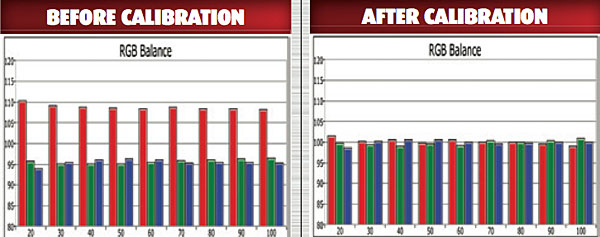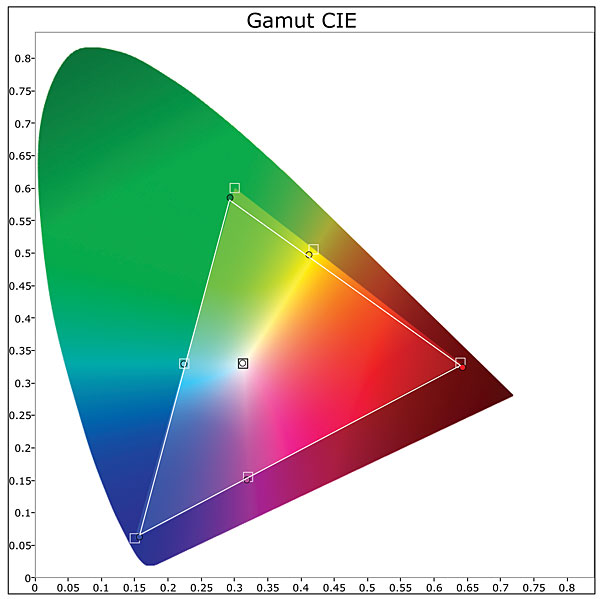Sony XBR-65X900A 3D LCD Ultra HDTV HT Labs Measures
Full-On/Full-Off Contrast Ratio: Unmeasurable
All of the measurements here were taken in the Cinema 1 Picture Mode through an HDMI input. Unless otherwise noted, these results were for 2D operation.
With the Backlight set to 7, the Picture (contrast) control at 86, the Brightness at 50, the Advanced Contrast Enhancer on Medium, Live Color off, and the LED Dynamic Control on Standard, the measured peak white level was 41.65 foot-lamberts and the black level 0.000 ft-L. This doesn’t mean the set has infinite contrast, only that the LEDs turn off in the presence of a black signal, such as fadeouts between scenes.
In the Gamma control’s –2 setting, the gamma averaged 2.37 (low 2.37, high 2.4). At a setting of –1, the gamma averaged 2.29.
Delta E is a figure of merit indicating how close the color comes to the D65 HD standard at each point in the brightness range. Values below 3—some experts say 4—are generally considered visually indistinguishable from ideal.
In the Sony’s Warm 2 Color Temperature setting, the average pre-calibration gray-scale Delta E was a fair 5.02, with a low of 1.67 at 20 percent brightness increasing steadily to a high of 7.95 at 100 percent. Post-calibration, the average gray-scale Delta E was 0.50, with no value higher than 1.20.

Color-tracking charts were generated in SpectraCal CalMAN, www.SpectraCal.com
As with the earlier KDL-55W900A, a 2D blue test pattern automatically faded in brightness after a second or so, producing an unreliably high blue color Delta E reading. With blue included, the average post calibration color Delta E was 7.76, but none of the colors apart from blue had a color Delta E higher than 3.23.

The set was also calibrated in 3D (charts not shown). The pre-calibration 3D gray-scale Delta E averaged 6.28, peaking at 9.56 at 100 percent brightness. Post-calibration, the 3D gray-scale Delta E averaged 0.85, peaking at 2.0 at 100 percent. The post-calibration color Delta E averaged 2.42. The peak brightness in 3D (with the Picture setting at 98) was 24 ft-L, and the gamma at the Gamma control’s –2 setting averaged 2.22.—TJN





























































